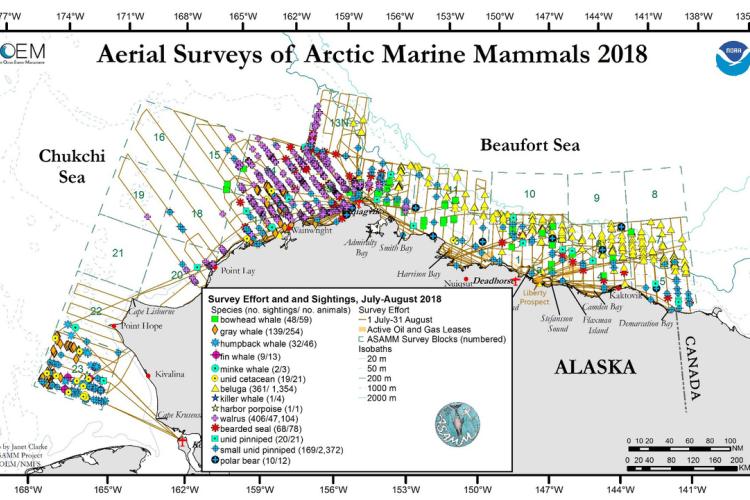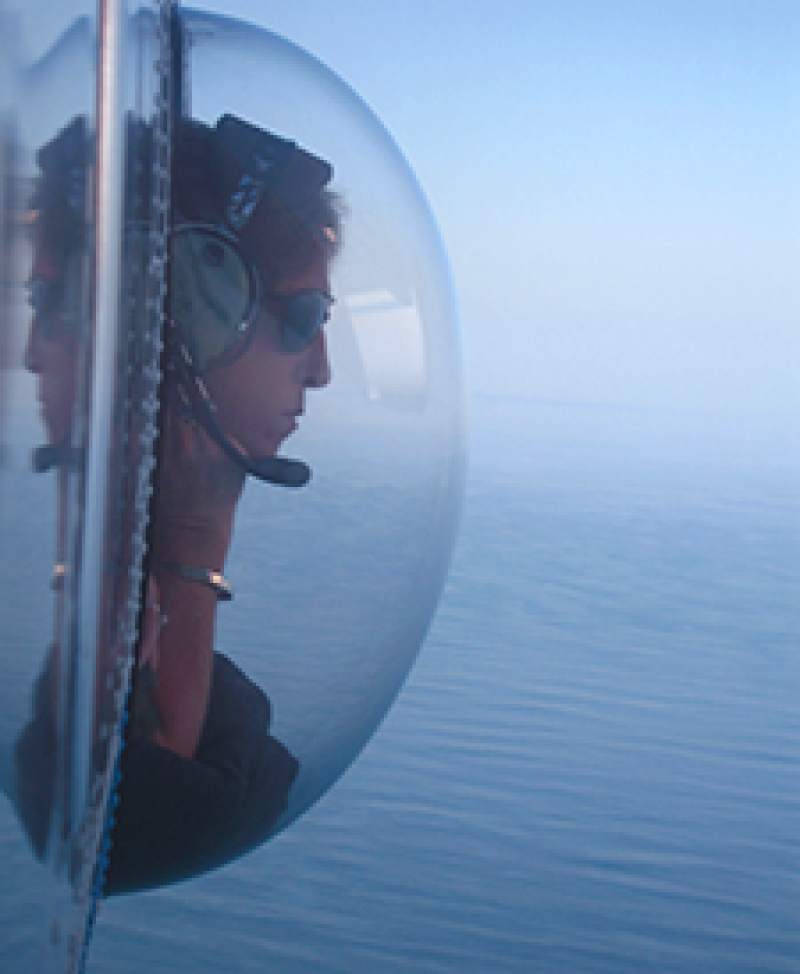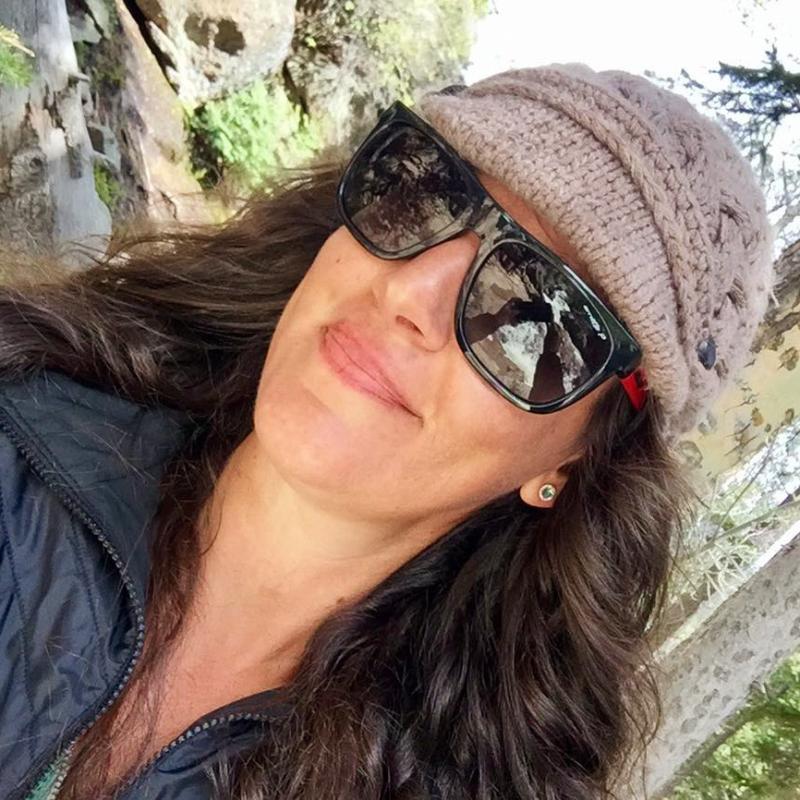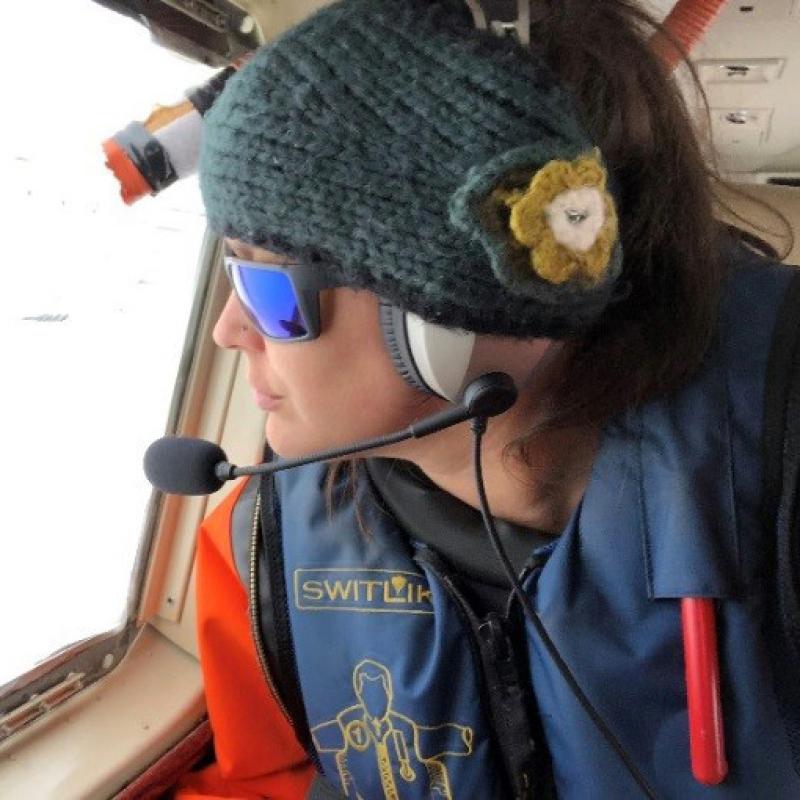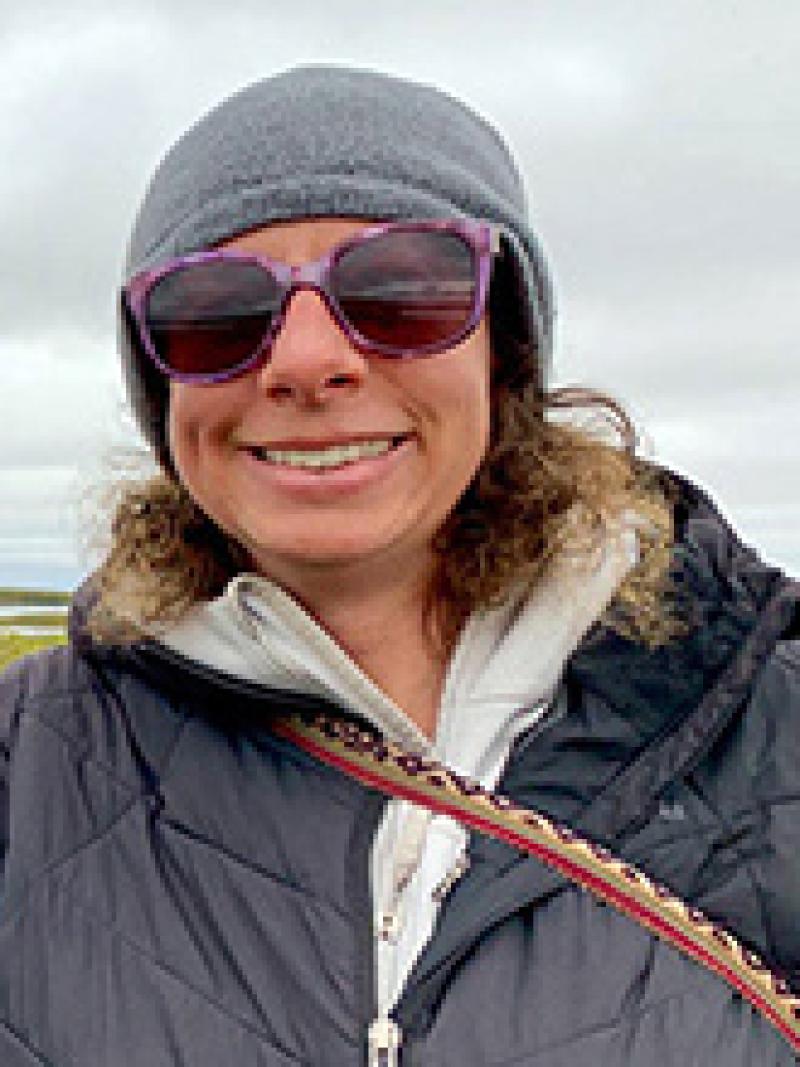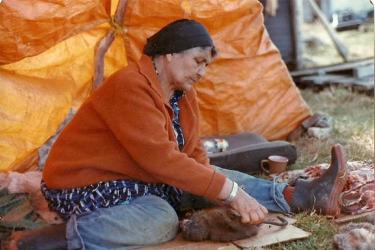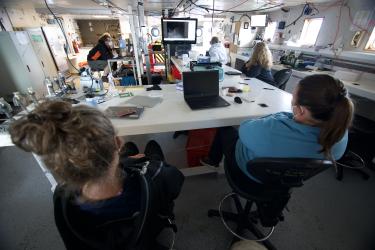
Two Pacific gray whales.
Num num num! These two Pacific gray whales are pictured with mud streaming out of their mouths, coloring the teal waters behind them with brown plumes. Gray whales often dive down to the seabed where they suck and scoop the soft mud of the ocean floor into their mouths. Why would they want to do this, you ask? Because this mud contains many small crustaceans (shrimp-like animals) that the whales feed on. Gray whales push the mud out through their baleen and the tiny animals remain trapped in the whales’ mouths. Gray whales have the coarsest baleen of all the whales and are the only baleen whale that are primarily bottom (called benthic) feeders. These gray whales were documented in the northeastern Chukchi Sea inside Peard Bay. Gray whales were first seen feeding in this mostly enclosed bay in 2016.

A gray whale cow-calf pair.
This gray whale cow-calf pair was sighted on 19 August 2018, approximately 50 km northwest of Wainwright, Alaska, in the northeastern Chukchi Sea. In this photo, the calf is belly up, and a mud plume is streaming behind the cow from her benthic feeding. Eastern North Pacific gray whale calves are typically born in winter in the lagoons of Baja California, Mexico. The majority of this population migrates up to the northern waters off Alaska in the Chukchi and Bering seas to feed in the late spring through early fall. Calves are getting big by summertime and weaning probably takes place while on the northern foraging grounds.

Feeding bowhead whales.
The white chin patch on these feeding bowhead whales, sighted on 2 September 2018 approximately 20 km east of Point Barrow, Alaska, stands out against the black of the rest of their body and the dark color of the food-rich waters they are swimming through. These whales are swimming on their sides and, above the white chins, the huge gapes of their open mouths can be seen. Black baleen plates hang down from the upper jaw. The head of the bowhead whale makes up about 1/3 of the whale’s 60-foot length. Such a big mouth allows a lot of food to get into the bellies of these whales, which is good since their main food is zooplankton that are smaller than a grain of rice. The bowhead whales seen here are side feeding, skimming the upper rack of their baleen along the ocean’s surface. The dynamics of the water have concentrated their food, allowing the whales to maximize the amount of plankton they can eat, yum!

Four killer whales, or orcas.
ASAMM sighted four killer whales, or orcas, just north of Utqiaġvik (formerly Barrow), Alaska, on 30 August 2018. Since ASAMM began in 1979, killer whales have been documented only 10 times, so encountering them in the Chukchi and Beaufort seas is a special treat.

The Polar bear.
This fat and healthy-looking polar bear was sighted lying on the tundra approximately 30 km south of Utqiaġvik, Alaska. Its face and paws are dirty, presumably from feeding on what was likely a walrus carcass that was on the beach nearby. Because of its location, this polar bear may be from the Southern Beaufort Sea subpopulation of polar bears. Polar bears need sea ice as habitat from which to hunt seals, and due to sea ice loss in recent years, there are concerns with declining body condition, birth rates, and cub survival of this subpopulation. It was good to see this bear looking healthy.

In recent years, July through September has been considered ice-free months in the Beaufort and Chukchi sea ASAMM study areas.

A view of the open sea.
In recent years, July through September has been considered ice-free months in the Beaufort and Chukchi sea ASAMM study areas. However, in 2018 the extent of sea ice in the Beaufort and northern Chukchi seas has been unusually extensive. Sea ice is frozen ocean water that becomes covered in layers of snow. Sea ice that doesn’t melt the following spring/summer months has the chance of becoming multi-year ice. There are many physical processes that contribute to the formation and breakup of sea ice, and the constant movement of the ocean, ocean currents, and winds create many different shapes and sizes of sea ice. These sea ice photos were taken in the Beaufort Sea, in July through early September.
*All photos taken under research permit with funding from the Bureau of Ocean and Energy Management.
